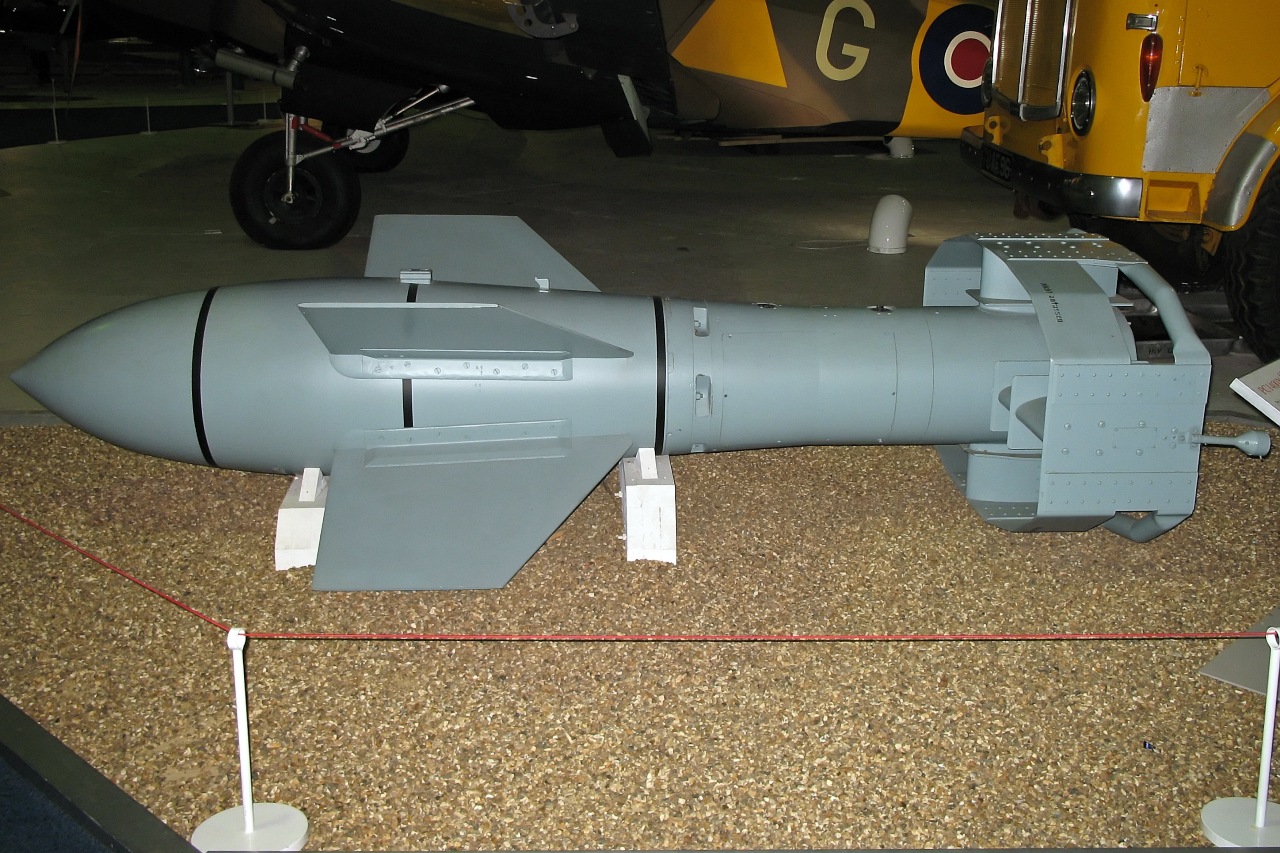
Glide bomb
A glide bomb or stand-off bomb is a standoff weapon with flight control surfaces to give it a flatter, gliding flight path than that of a conventional bomb without such surfaces. This allows it to be released at a distance from the target rather than right over it, allowing a successful attack without exposing the launching aircraft to anti-aircraft defenses near the target.[1] Glide bombs can accurately deliver warheads in a manner comparable to cruise missiles at a fraction of the cost—sometimes by installing flight control kits on simple unguided bombs—and they are very difficult for surface-to-air missiles to intercept due to their tiny radar signatures and short flight times. The only effective countermeasure in most cases is to shoot down enemy aircraft before they approach within launching range, making glide bombs very potent weapons where wartime exigencies prevent this.[2]
This article is about the use of gliding bombs. For shallow-angle dive bombing, also sometimes termed glide bombing, see dive bombing.
World War II-era glide bombs like the German Fritz X and Henschel Hs 293 pioneered the use of remote control systems, allowing the controlling aircraft to direct the bomb to a pinpoint target as a pioneering form of precision-guided munition. Modern systems are generally self-guided or semi-automated, using GPS or laser designators to hit their target.
The term "glide bombing" does not refer to the use of glide bombs, but a style of shallow-angle dive bombing.[3]